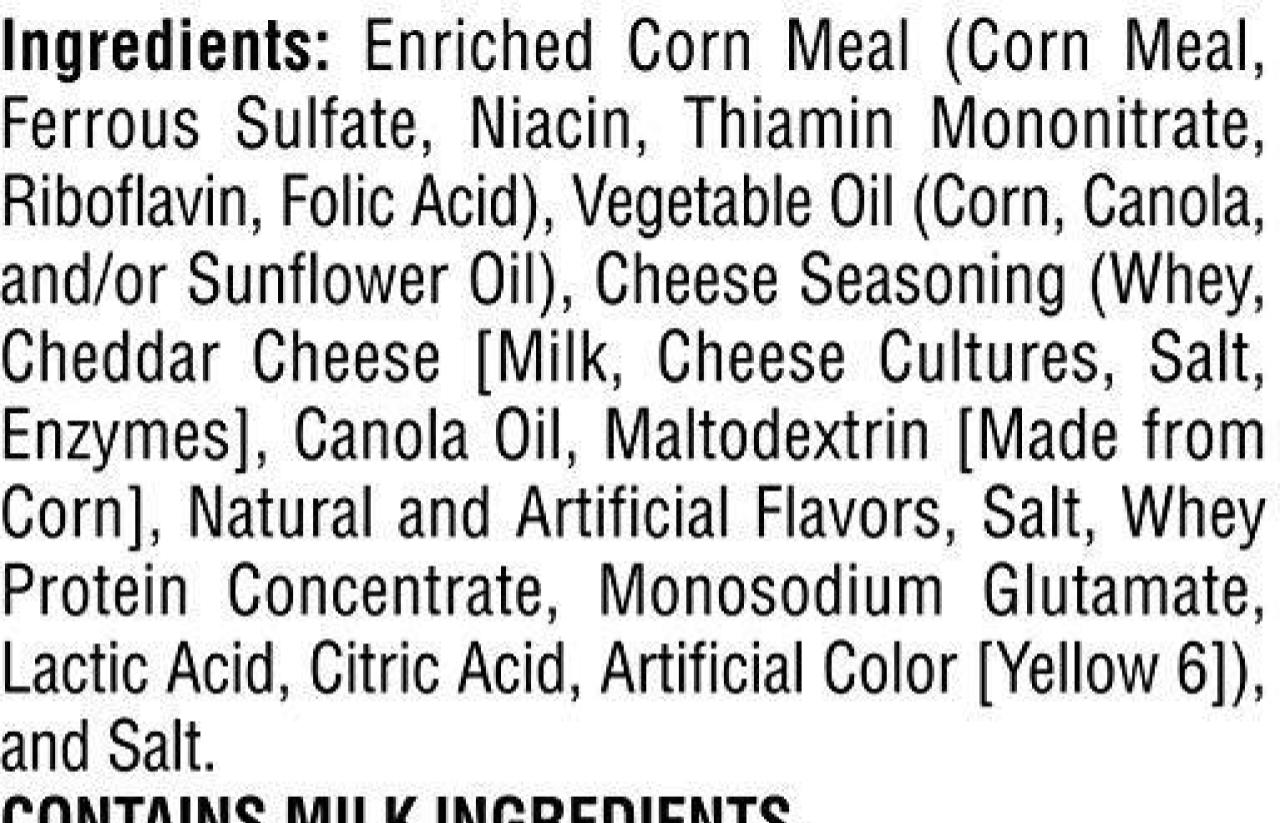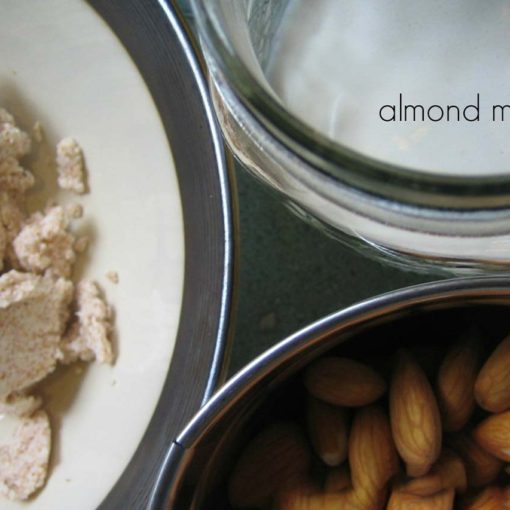Podcast: Play in new window | Download (Duration: 8:46 — 3.1MB)
Subscribe and don't miss an episode! Apple Podcasts | Spotify | Android | iHeartRadio | Deezer | RSS
Sometimes ingredient lists have words we can’t pronounce or understand.
But what are these ingredients? Are they safe? How are we supposed to know?
In this podcast, we’ll explain what some of those ingredients mean and whether or not to put that package down!
Transcribed Podcast, Ingredient Lists
Edited for clarity.
Wendy: We’re so glad you joined us on the podcast today we’re going to be talking about icky stuff in our foods.
Debbie: That’s a good way to put it. Yeah, food additives and stuff that’s in packaged and processed foods that we all eat.
Wendy: There are so many things in packaged foods, so we’re going to start out with a lesson, right? The take-home message is that we need to look at ingredients labels.
Debbie: Right. If you’re going to eat packaged and processed foods, which we all do. It’s practical and it’s realistic. But please, before your buy it, take it off the shelf look at the ingredient list. That’s a habit. And it’s one that you can get used to doing. I didn’t used to do it but now I don’t even think twice. It’s like the first thing I do when I grab a box is that I look at it.
Wendy: And there are trusted stores out there that we go to that we might just grab something in the package because we think that they’ve already done their due diligence and we take it home or halfway through eating it and it’s sitting on the table, we’re like, “ohhh!”
Debbie: That’s happened to me!
Wendy: “Yeah, I wish I hadn’t had that.” So we live it and breathe it and we still do it.
Debbie: So, no matter what is it, whether you trust the brand or not, look at the ingredients list.
Wendy: Yeah because brands get gobbled up by other brands. Things change. So, there are more than 10,000 additives allowed in our food in the United States.
Debbie: And that means “allowed,” meaning they’re legal. Meaning the United States doesn’t say, “no these cannot be in our foods, they’re OK, they’re OK to be here.
Wendy: So, the United States does not have the same qualifications, restrictions, protection really, as many of the European countries. You notice it in your Beautycounter stuff for things we use on our faces. And I see in the Young Living stuff too.
Debbie: A lot of ingredients aren’t governed in food, in beauty products, and the government is not doing its job. It’s not doing its due diligence to protect us to keep us safe that way.
Wendy: One of the greatest resources that we have that we want to share with you is the Environmental Working Group and they have a food score database.
Debbie: It’s really cool. You can just type in any product and it comes up with a score, one through ten–ten not being good.
Wendy: That’s right. You want to stay away from 7,8,9, and 10. Right?
Debbie: Right.
Wendy: Right? Yeah, maybe even 6’s.
Debbie: Yeah, I would try to always stay below, five or below. But they give reasons why a food is a 7 or an 8 or 9. You might be surprised by doing that. You just go to Google and type in “EWG’s food scores database” and you’ll find it where you can type in any kinds of foods and get your score. So the government uses the classification system called “GRAS”–generally recognized as safe. And they use that for the additives that are put into our foods. And so they assume that these foods or these additives are safe–they’re generally recognized as safe, and they’re not required to undergo any pre-market testing. And they can use it for such benign things as salt and pepper, but it’s also used in other chemicals that are not from the earth and are really damaging to us. Having that GRAS status is really not something that is, to us, safe. We don’t think of it as safe, so some people might look at that and be like, “oh, well, this food is fine, it’s GRAS.”
Wendy: But not necessarily.
Debbie: Right. Because, look at some of the ones that we have on our list that are considered GRAS, and they’re not safe.
Wendy: So let’s list a couple of them and then we also want to have you go, as a listener, we want you to go to our website because we’re going to list them there because you might be out there driving or ironing or cooking or playing with your kids or . . .
Debbie: The joy of podcasts!
Wendy: Yes, so we want to list some of them. First one is nitrites and nitrates, a preservative to color foods–ground beef, for example, so it doesn’t turn gray–they want it to look nice and red and ready, but that’s pretty unnatural to stay that color.
Debbie: Most people think of bacon when they think of those additives.
Wendy: So, they are definitely in bacon, and burgers, hot dogs and salami.
Debbie: Usually meats. But it’s not just bacon, that’s the whole point–it’s people–they pay attention to it when it comes to bacon, but they don’t pay attention to ground beef.
Wendy: And that one specifically from the World Health Organization we know that in studies they found them to be potential carcinogenics. Which means, cancer-causing. That’s one of those GRAS products–generally recognized as safe–that we suggest you don’t put in your body. We talked about cancer-causing, right? The whole purpose of talking about this in this podcast is why do we want to take it out of our foods? Why can’t we eat those processed foods?
Debbie: Yeah, the whole reason we ask our clients not to eat these things, and the reason is that besides being cancer-causing is, and you’ve heard this term, I’m sure, is that a lot of these additives and preservatives and chemicals are endocrine disruptors. What is that exactly? What does that mean? People say, “Oh, endocrine disruptors, that’s kinda scary!”
Wendy: And they don’t even know what it means!
Debbie: Right
Wendy: Right! Right. It’s our hormone system. It’s the entire hormone system. And it’s a web.
And it’s not just one, you know, it’s not just the ovaries.
Debbie: It’s never just one hormone.
Wendy: It’s all connected. It’s the pituitary. It’s the thyroid, and it’s . . .
Debbie: Everything! Our whole body is governed by hormones. It’s like that is the most important thing in our body as far as how our body works and how it sets off other things in our body to work.
Wendy: Whether they be positive or negative. I mean, we can turn on and off our hormones through our food.
Debbie: Yes we can, and I’m sure some people know that hormones rule their life and some people who are feeling well most of the time don’t realize how their hormones are doing all this work, but people may be sick and not realize what’s making them sick and it might simply be an additive in their food that they’re eating every single day that’s disrupting their endocrine system. So, that’s really a big thing to me. You know, if I see something that’s an endocrine disruptor, that is OUT completely. Not only what I eat, but what I put on my skin.
We don’t want any of those endocrine disruptors if we can avoid them. There’s also other words that we can’t pronounce.
Wendy: Let’s call them BHA and BHT–those are two of them and potassium bromate as well–all three of those are used in any kind of bread products. So, chips and crackers and breads and bagels and buns. And it’s used to strengthen them and preserve them.
Debbie: Right, and to give them a certain texture. It gives them what we think of as breads and crackers.
Wendy: The mouthfeel. It’s not just the gluten in there. It’s also these preservatives that help with that mouthfeel.
Debbie: Which foods that scientists have designed specifically for us to have those exact things.
Wendy: There’s an art in this.
Debbie: Yes, there is!
Wendy: Makes us keep coming back for more.
Debbie: Yeah, unfortunately.
Wendy: There’s another couple of highlights that we wanted to focus on. One of them is you might have heard us say before that one of the only things we ask people to completely take out of their food is artificial flavors and colors and sugars. But when it comes to natural flavors. That’s very tricky, right? You might trust a brand, but you don’t know what “natural flavors” means. It’s not regulated. It doesn’t mean anything. It doesn’t mean it’s from the Earth. It might mean it’s from the Earth but it’s not good for us.
Debbie: That’s right, because there are things from the Earth that are not good for us. So, generally, I think, it’s a really good idea to first look at the ingredients. If there’s anything on there you can’t pronounce, question it. You know?
Wendy: Look it up.
Debbie: Look it up. Use the EWG’s food scores database.
Wendy: And there’s an app for that too, so if you’re with a phone, download it. For free.
Debbie: It is free. And, of course, we’ll have our list on our blog so you can check that out if you want to kinda compare our list to some products you have in your cabinet. And slowly phase them out. If a lot of these words are in a lot of your products, baby steps. I wouldn’t just go and throw everything out all of a sudden because that won’t feel good and it won’t last.
Wendy: Slowly upgrading them.
Debbie: And finding substitutions is what I’ve done. My son was talking about these little cheese crackers that I gave him, which are processed foods–not the best things in the world, but I guess they are a natural brand that I trust and I know the ingredients and he said, “They’re not Cheez Its, Mom,” and I said, “No, they’re not. There’s a reason for that!”
Wendy: Alright, so thanks for listening and here’s to your health!






